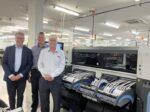Timoti Harris, Managing Director at Empowering Change:Te Tiriti in the workplace
While the broad strokes of Te Tiriti o Waitangi are now widely acknowledged, many people do not know its contents and intent. Much of HERA’s forward programme of research involves achieving industry focused solutions – but a much-needed change is that it now needs to be reviewed through the lens of te ao Māori. This is part of HERA’s commitment to acknowledge Te Tiriti o Waitangi and interfaces between Mātauranga Māori (Māori knowledge) and industry to expand knowledge and practice more generally. An example of this is HERA’s Endeavour Fund four-year research project focused on transforming the construction sector in Aotearoa New Zealand using Construction 4.0 approaches. The Mātauranga Māori research theme within it, aims to address the gap of knowledge that exists and build a uniquely Māori framework to address the challenges of Construction 4.0. This will create new knowledge domestically and will sit internationally as an example of indigenous knowledge being incorporated into sectoral transformation. HERA acknowledges that for industry, this will be confronting for some. Challenging the status quo of ‘doing’ business requires courage, even more so when the way to do it means looking through a cultural lens that may be unfamiliar. However, there are significant changes occurring in New Zealand that indicate HERA needs to focus on this, as does business. This includes from a government perspective, the development of the Vision Mātauranga strategy of MBIE; development of the Te Ara Paerangi Future Pathways White Paper on the future of the research, science and innovation system imbedding Te Tiriti as one of four key focus areas; the revisions to the Education Act that now require honouring of Te Tiriti; and changes to government procurement rules that call for business to consider how to create opportunities for Māori. As industry faces skills gaps and labour […]










